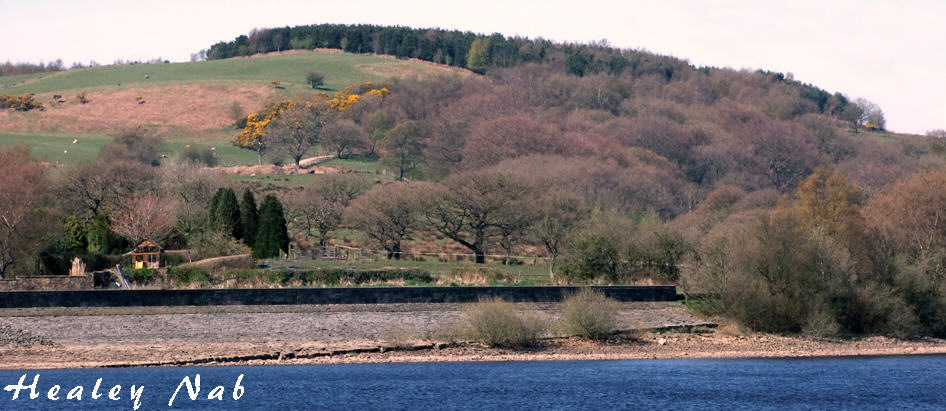Healey Nab and its summit Grey Heights stands at a lowly 683 ft. Yet from the top the vista is superb, with views to the Lake District, Deepdale, Southport, Anglesey, Snowdonia and the Staffordshire hills.
The Nab has provided entertainment for several hundred years. In the middle ages it was a Royal hunting ground. However, the land was only accessible and enjoyable by a select few. As the years passed there are reports of mass trespass and now today, with free access, it gives pleasure to everyone. Walkers, horse riders, cyclists, dog walkers and even campers enjoy the Nab. The latest addition is a cycling track through the woods, which attracts cyclists from all around the north west.
Industry Considering the area is small, industry has always been a feature of the Nab. Farming has always been a part of Nab life. To this day, sheep and cows graze on the lower slopes and to the south they graze to almost the summit (as can be seen in the photo above). Farms are located on all sides. Evidence of quarrying and mining are plain to see. As late as the late 1960's quarrying took place. Stone was required for the construction of the M61 and as this extract shows, stone from the summit was used.
"Stone was mainly obtained from four sources, the most important being Healey Nab lying adjacent to the line of the motorway. By excavating the top of this hill to a depth of 30 feet some 2½ million tons of rock were obtained with the advantage that direct access to the line of the motorway could be obtained without haulage vehicles having to use existing roads. This was an important factor in enabling the Contractor to obtain planning permission and with strict conditions concerning reinstatement, the resulting appearance of the hillside was very little different from the original."
Botony Bay, which lies at the foot of the Nab was a busy canal basin during the heyday of the canals. There was a good warehouse system and cotton and coal were the main commodities transported from here.
There was also two large factories at the foot of the Nab. Heapey Bleach and Dye works was a very large site. Originally called the Dacca Twist Company, it went on to be known as Rylands and lastly Witters. They produced linoleum. In the mid 1970's it employed over 500 people and manufactured 24 hours a day. A few years later it closed and was demolished. The other factory was at Froom Street. This was also owned by Witters and manufactured carpets until very recently. This building still stands
Access The main approaches from Chorley are Crosse Hall Lane, Froom St, Bagganley Lane and Botany Bay. Other ways are from Heapey Road and several from Higher House Lane, Heapey. The two most popular being the approach from Anglezarke Reservoir or the path near Cliffe Farm. From the south there is a bridleway from Kay's Farm and a path from Limbrick - though the latter is seldom used.
|

